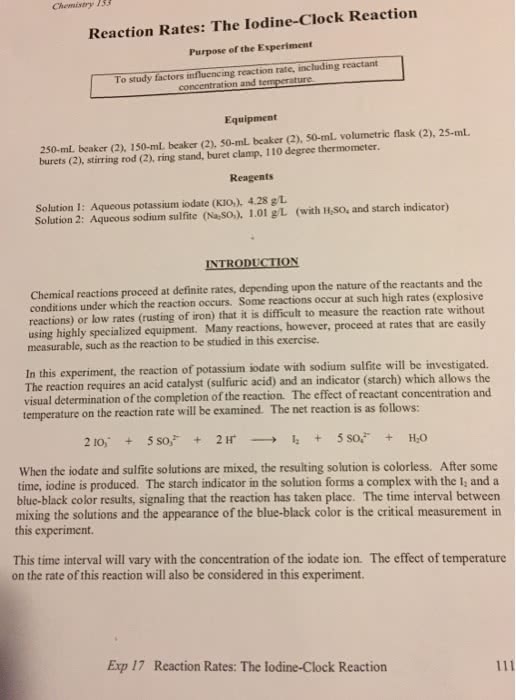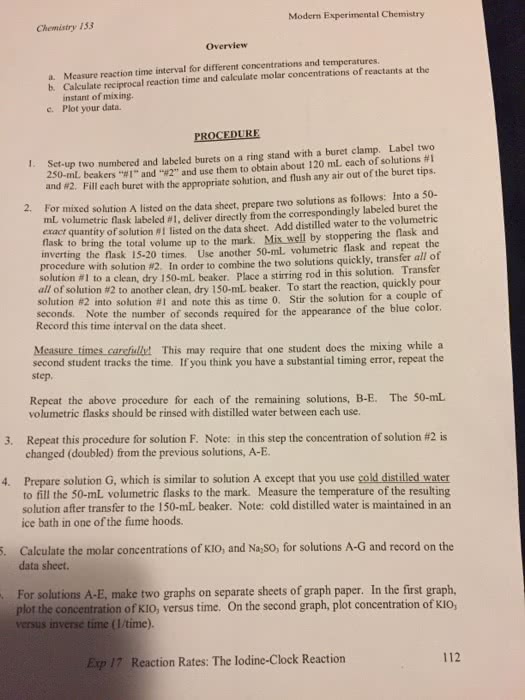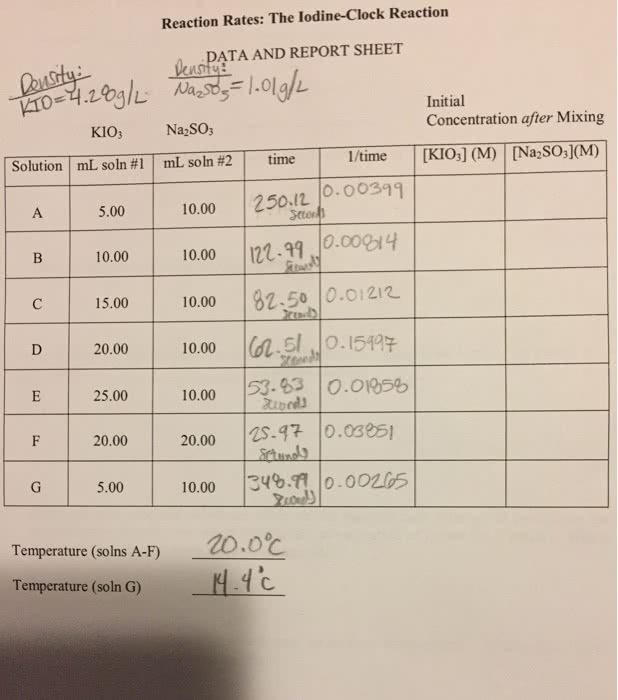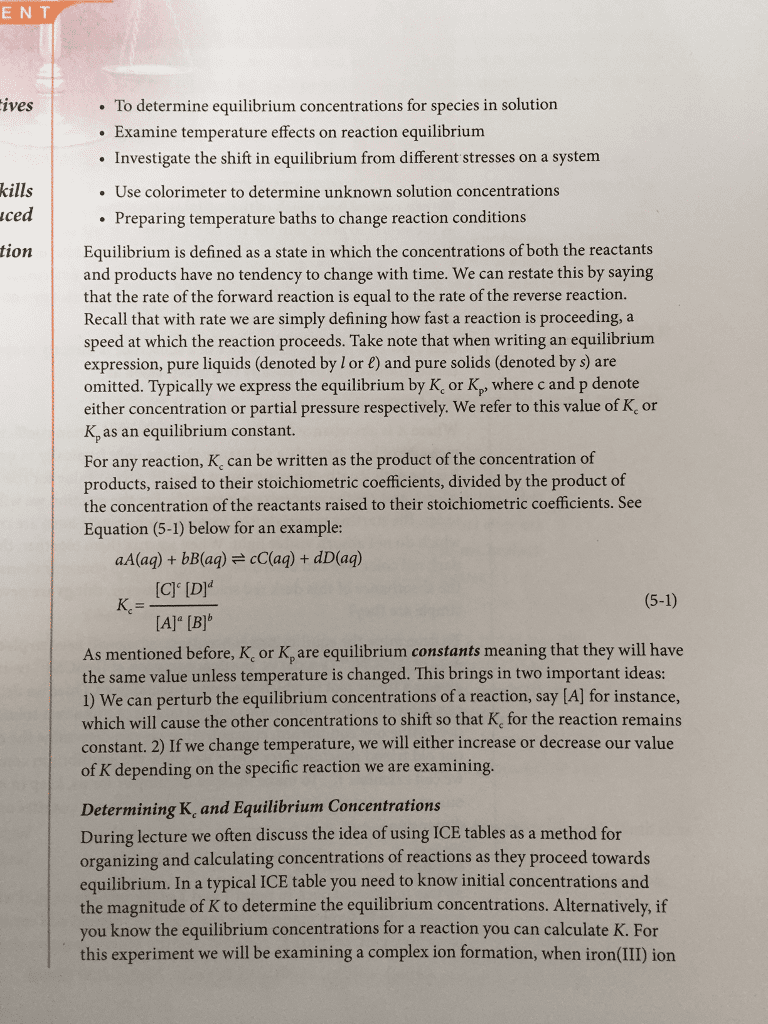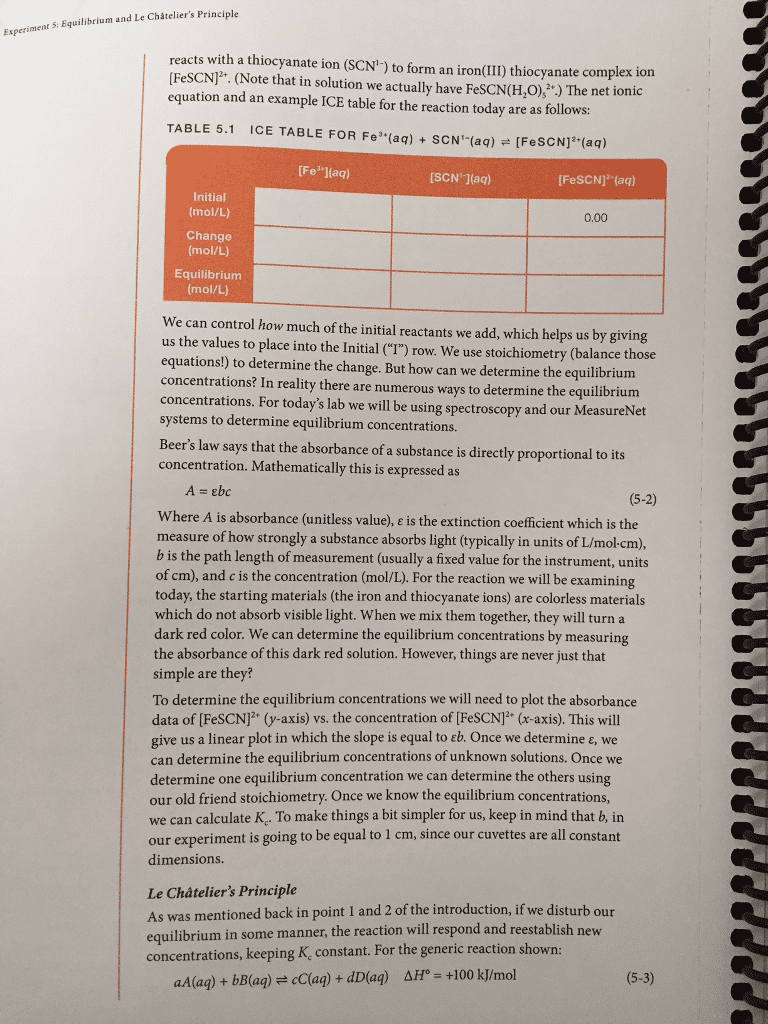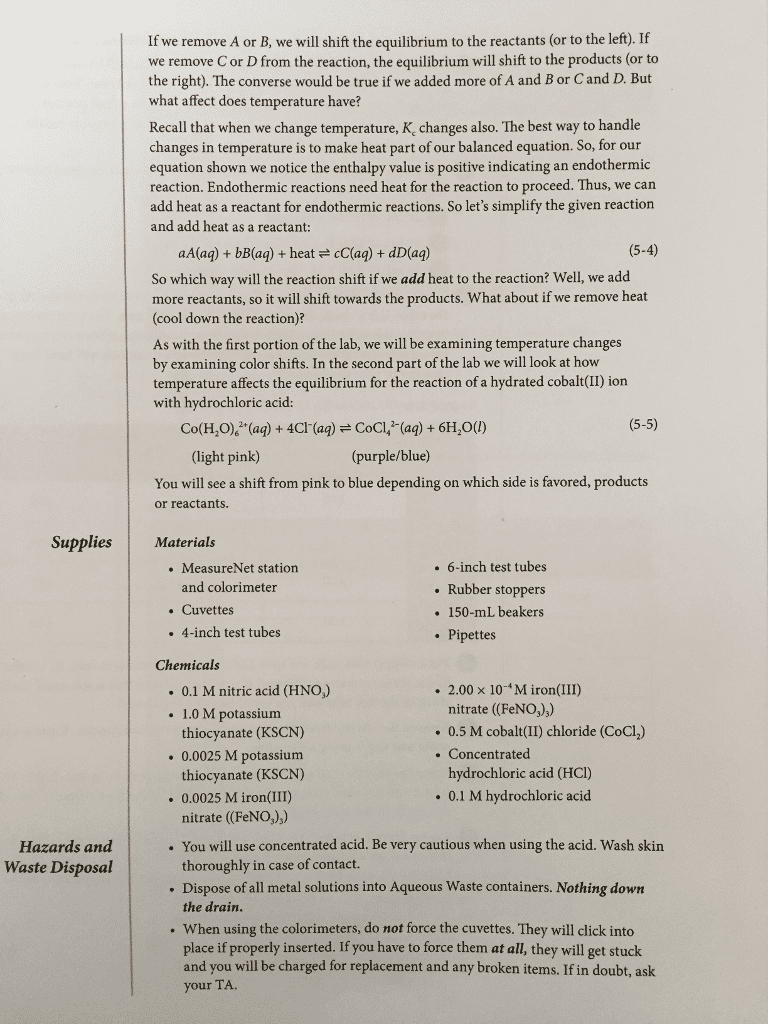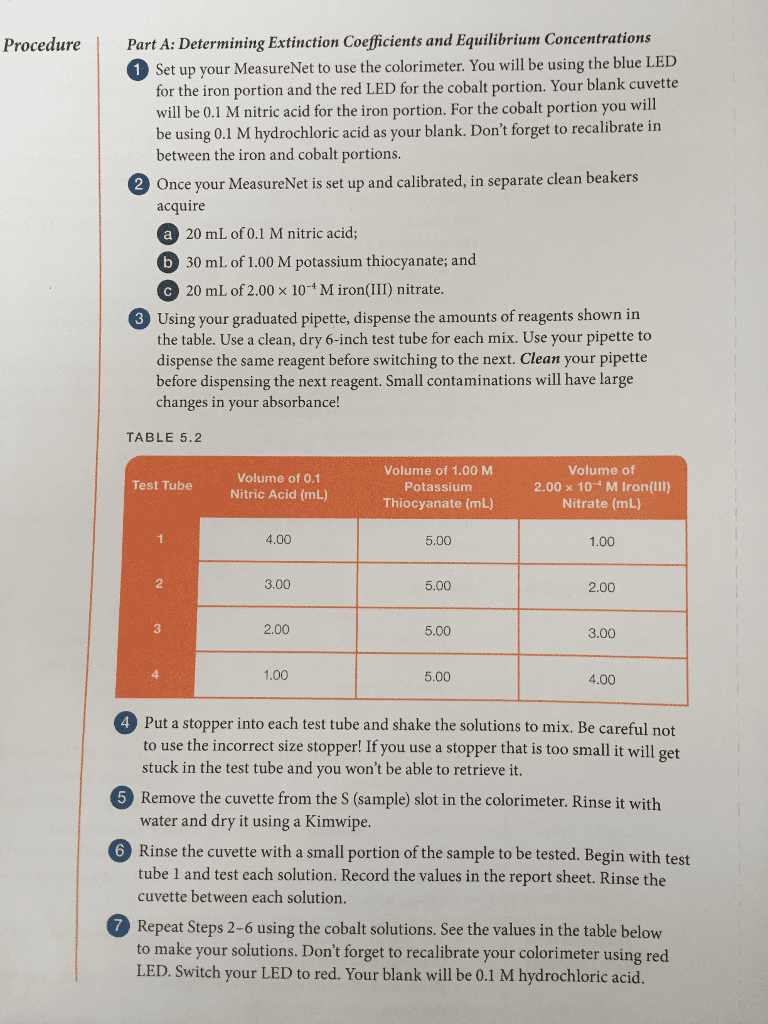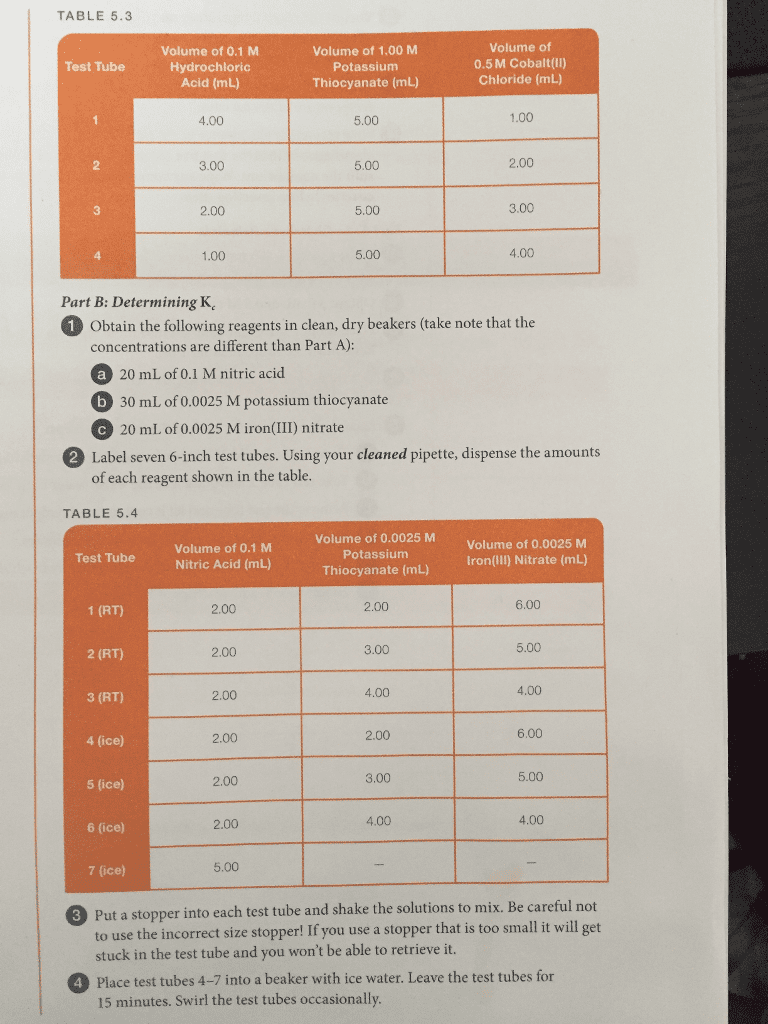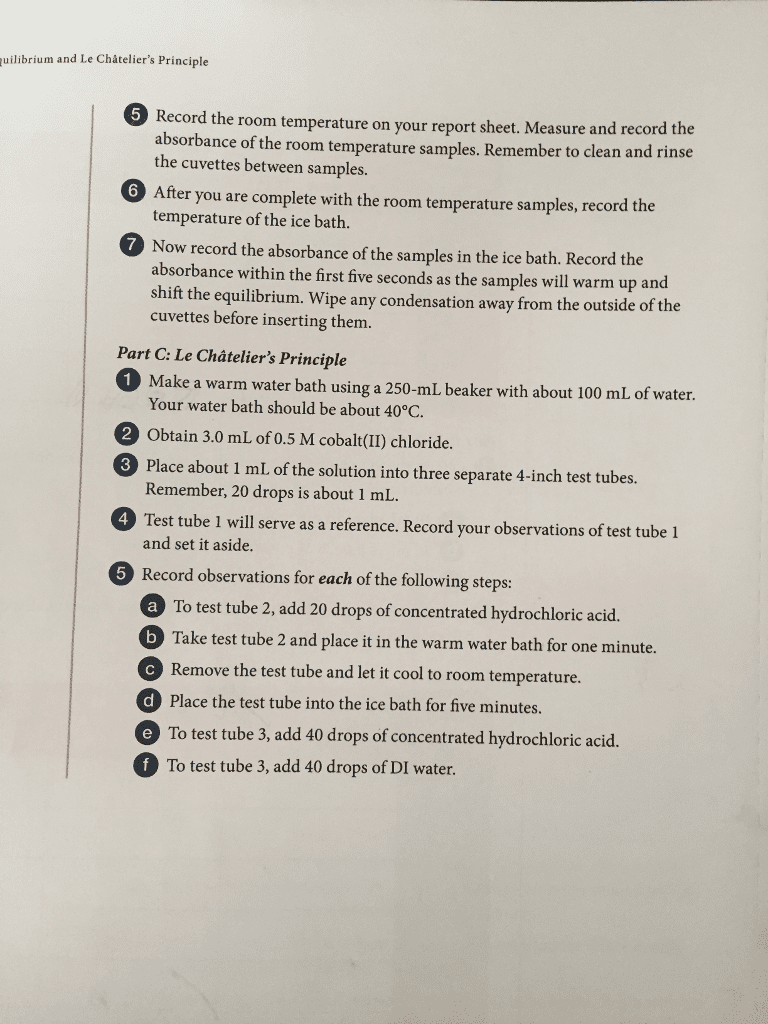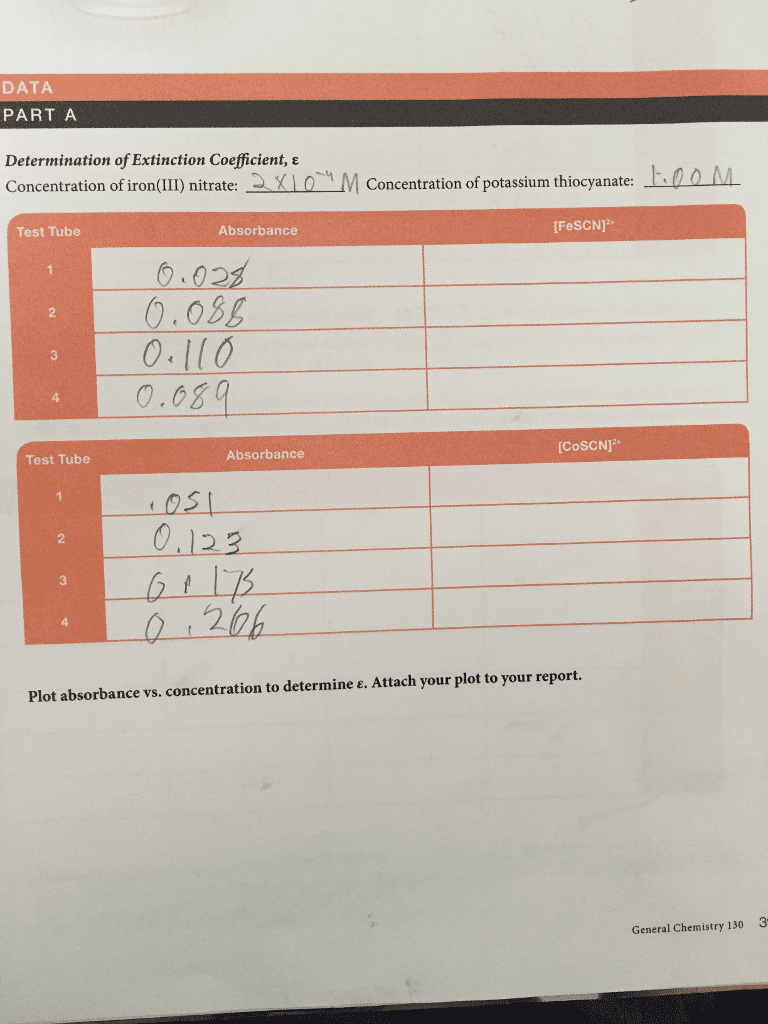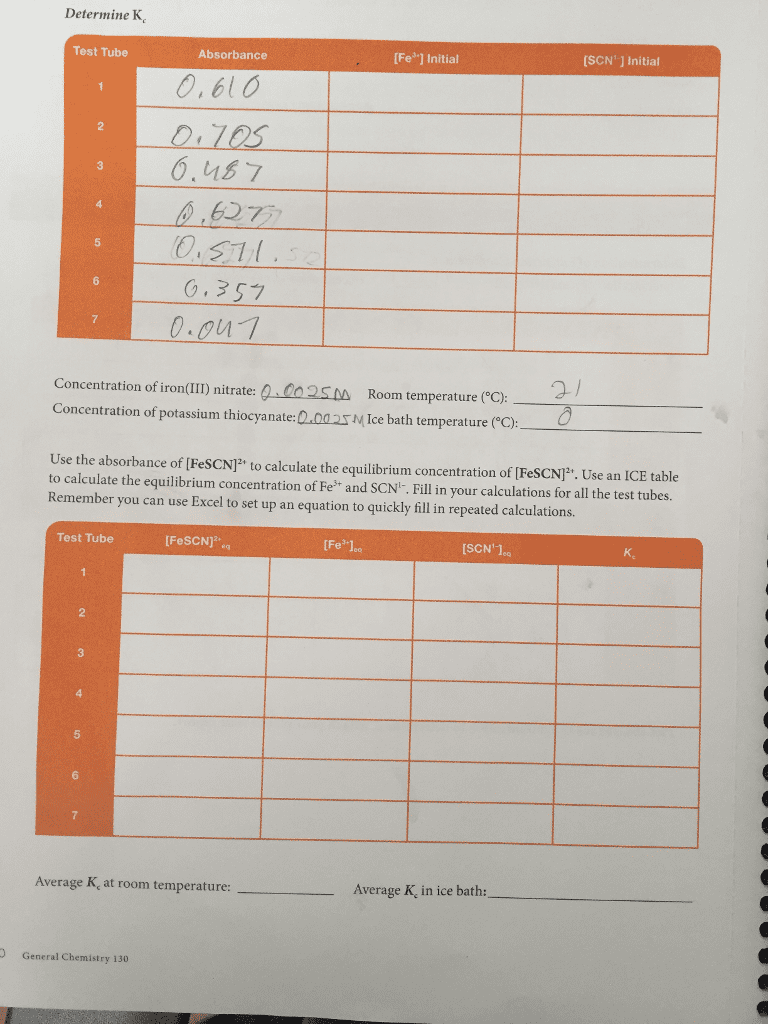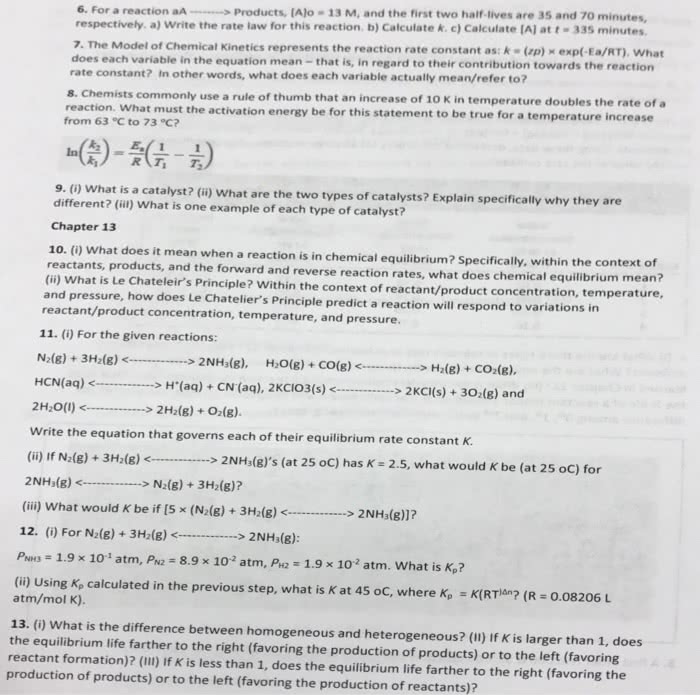CHEM102 Chapter Notes - Chapter 16.1: Reaction Rate, Collision Frequency
33 views2 pages
9 Feb 2017
School
Department
Course
Professor

32
CHEM102 Full Course Notes
Verified Note
32 documents
Document Summary
Chemical kinetics: the study of the rates and mechanisms of reactions. Typically fast reaction rates: neutralization, precipitation, explosion. Slow reaction rate: many reactions, ripening of a fruit, human aging, formation of coal. We can control 4 factors: concentration of reactants, physical state of reactants, temperature of reaction, use of a catalyst, concentration: molecules must collide to react. More molecules present = more frequent collisions = more reaction. Reaction rate is proportional to the number of collisions which depends on the concentration of reactants: physical state: molecules must mix to collide. When in the same phase, random thermal motion brings them into contact and stirring mixes them. When they are in different phases, contact occurs only at the interface vigorous stirring or grinding. More surface area of solid/liquid reactant = more contact = more reaction: temperature: molecules must collide with enough energy. Temperature increases the frequency and energy of collisions. Rate is proportional to collision frequency and temperature.
Get access
Grade+20% off
$8 USD/m$10 USD/m
Billed $96 USD annually

Homework Help
Study Guides
Textbook Solutions
Class Notes
Textbook Notes
Booster Class
40 Verified Answers
Class+
$8 USD/m
Billed $96 USD annually

Homework Help
Study Guides
Textbook Solutions
Class Notes
Textbook Notes
Booster Class
30 Verified Answers
Related textbook solutions
Chemistry: Structure and Properties
2 Edition,
Tro
ISBN: 9780134293936
Basic Chemistry
5 Edition,
Timberlake
ISBN: 9780134138046
Principles of Chemistry Molecular Approach
4th Edition,
Tro
ISBN: 9780134112831
Principles of Chemistry Molecular Approach
3rd Edition, 2014
Tro
ISBN: 9780321971944
Chemistry: Structure and Properties
2nd Edition,
Tro
ISBN: 9780134293936
Chemistry: A Molecular Approach
3rd Edition,
Tro
ISBN: 9780321809247
Chemistry: A Molecular Approach
5th Edition,
Tro
ISBN: 9780134874371
Principles of Chemistry: A Molecular Approach
4th Edition,
Tro
ISBN: 9780134895741
Chemistry: The Central Science
14th Edition, 2017
Brown
ISBN: 9780134414232
